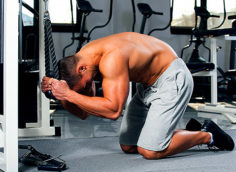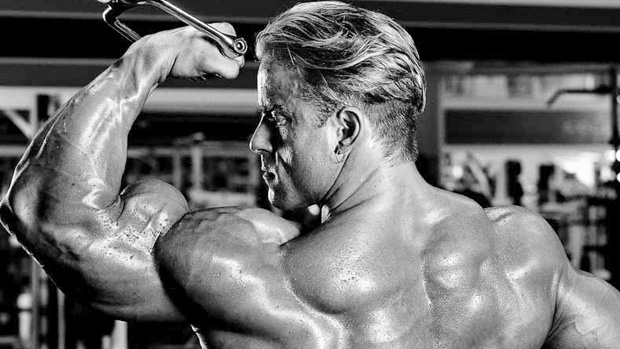Olympic lifts are fantastic for developing full-body speed and power. Their drawback? Learning them requires a ton of time and energy. There's no such thing as a one-hour Olympic lifting crash course that'll make you proficient.
Why would you WANT do them? Because they're fun as hell. There's something about explosive, fast, and powerful movements. And you can't replicate that feeling without doing an explosive, fast, and powerful movement. But other than that, they'll make you stronger and more capable of moving heavy shit in the process.
Luckily, there's a way to get many of the benefits of these moves. Just take some simpler variations and add them to your current training program. Start with these two exercises.
This movement is great for training the hips to be explosive, in addition to revving up your CNS. Since this movement is considered a hip hinge, it would be an excellent exercise before you deadlift. To do it correctly, you should achieve triple extension (extension through the hips, knees, and ankles).
How to do it:
- Begin with your hips slightly pushed back and knees slightly bent with the dumbbell in the center of your body.
- Explosively extend the hips, knees, and ankles as you jump upwards to the ceiling. Be sure to keep your upper back tight.
- As your hips are extending, forcefully pull up on the dumbbell as you drive your elbow up towards the ceiling. Be sure you "sweep" the dumbbell back into the body, keeping it close as you pull.
- Think of pulling yourself underneath the dumbbell and punching upward as you catch the dumbbell in a quarter squat. Try to keep your bicep close to your ear as you catch overhead.
- Lastly, stand up with the dumbbell over your head.
Mistakes – Don't Make These!
There are two common mistakes to avoid. The first is turning this movement into a clean and press. This happens when you pull the dumbbell to the shoulder and press the dumbbell upwards. Here's what this mistake looks like:
To avoid this, remember that the exercise should be a pull the entire way.
The second mistake is keeping the arm straight the entire time, which essentially turns the exercise into a straight-arm shoulder raise. Here's what that mistake looks like:
This error happens when you're not using your lats to sweep the dumbbell back towards the hips. To prevent this problem, think of driving your elbow up to the ceiling once you explosively extend your hips. Keep the dumbbell close to the body.
This is a great way to teach yourself how to transfer kinetic energy throughout your entire body. When you do this properly, force will be generated from the legs and then transferred through the torso and arms. This teaches your body how to recruit motor units, allowing you to put more force into all your lifts.
How to do it:
- Think "dip, drive, dip, catch."
- Begin with one dumbbell rested on your shoulder with your other hand out to the side to counter balance.
- Dip down by pushing your hips back and slightly bending you knees. Keep your elbow up and heels on the floor as you dip. Your knees should track out as you dip.
- Drive upwards by explosively extending the hips and knees as you punch your knuckles up towards the ceiling.
- Dip back down quickly once you've fully extended your hips and knees and have hit the end of your press.
- Catch the dumbbell in a quarter squat with your bicep next to your ear. Make sure you push up hard on the dumbbell to stabilize your shoulder.
Mistakes – Don't Make These!
One mistake is forgetting to rest the dumbbell on your shoulder. You can get away with this when using a light weight, but once you go heavier using good technique is a necessity. Not resting the dumbbell on the shoulder places excessive stress on your shoulder, elbow, and wrist joints. Here's what this mistake looks like:
The second mistake is not sinking your heels when performing the first dip. Coming onto the toes when you dip causes your knees to shift forward which puts excessive shear stress on your knee. Remembering to push your hips back and thinking about sinking your heels usually helps to correct this mistake. Here's what this looks like:
No need to do more than 5 reps per set, and no more than 5 sets. Think of these as a tool to excite the nervous system to get you ready to lift heavy. Give yourself adequate rest between each set.
I'd recommend 3 sets of 3 reps for these exercises after doing a thorough active dynamic warm-up to get you ready to strength train.




